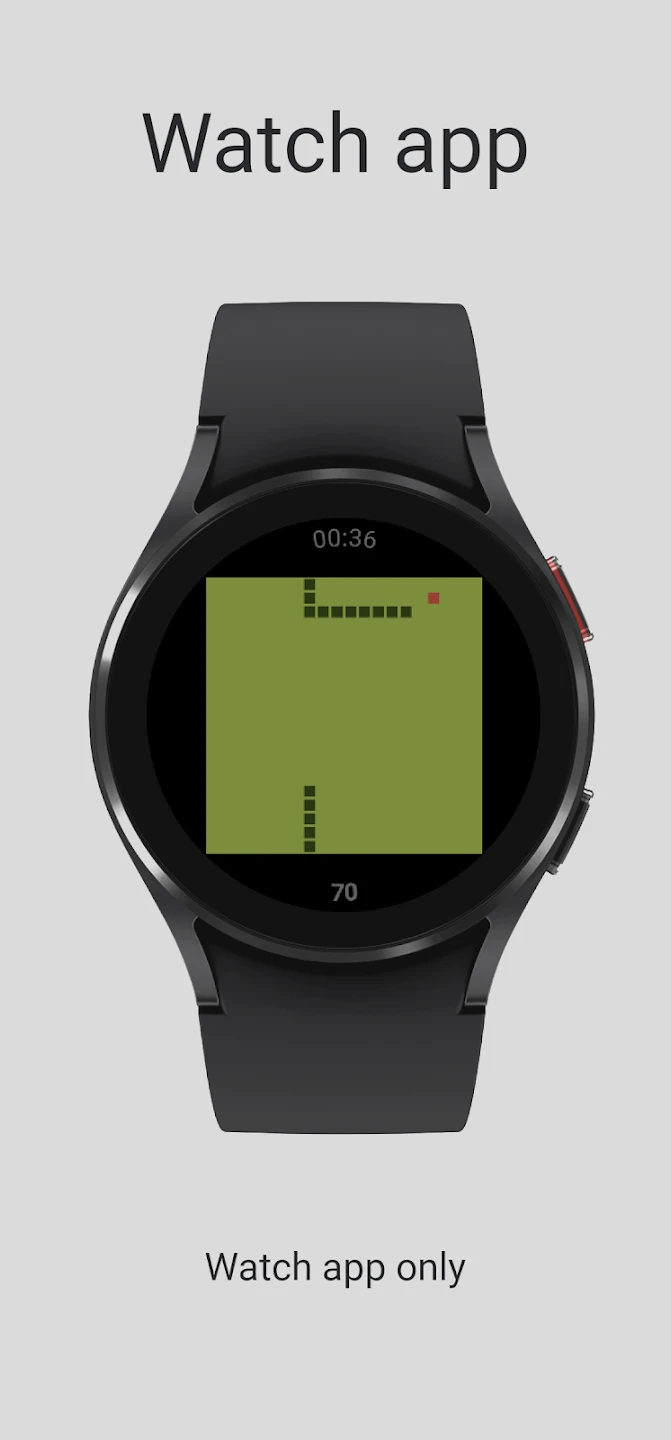 |
|
| Rating: 0 | Downloads: 1,000+ |
| Category: Casual | Offer by: Douglas Silva :: Dect |
The classic Snake game challenges players to navigate a growing snake around a bordered grid, consuming food to increase its length. It belongs to the simple puzzle and arcade genres, often found on mobile devices and web browsers. Its enduring popularity stems from its addictive mechanics, minimalist design, and the constant tension between growth and collision.
The gameplay experience for Snake is deceptively simple yet highly engaging, primarily focused on strategic movement and reflexes. The visual style is typically minimalist, featuring the snake and food rendered with basic geometric shapes, although modern versions might offer vibrant color schemes and animations. Despite its often simple visuals, Snake offers replay value through increasing difficulty levels, aiming for high scores, and variations on the core formula.
Gameplay and Features
- [Core Gameplay Loop]: Players control a snake using directional inputs (often arrow keys or swipes). The objective is to eat food (dots or pellets) that appears randomly on the grid to grow the snake longer without colliding with the snake’s own body or the grid boundaries. Each piece of food consumed increases the snake’s length and score.
- [Visuals or Art Style]: Snake games typically employ a simple, retro-style grid-based graphics system. The snake itself is usually a long, segmented line or block, often colored a distinct shade (like green or blue). Food is typically a single colored object. Modern variations may use more vibrant colors, smooth animations, or slightly more complex visuals.
- [Modes or Levels]: Classic Snake usually features a single-player mode with progressively faster gameplay or more obstacles as the player’s score increases, though the core map remains the same. Some versions include different board sizes or themed grids. Replayability comes from the challenge of achieving a higher score or surviving longer.
- [Controls or Interface]: Controls involve simple, direct inputs – typically arrow keys on desktop versions or touch screen swipes on mobile versions. The snake instantly changes direction accordingly. The interface usually displays the current score, the snake’s length (score often proportional to length), and the remaining space on the grid. Control is generally very easy to learn but requires good timing and spatial awareness.
- [Customization or Power-ups]: Basic Snake often lacks extensive customization or power-ups. However, some variants introduce features like different snake skins, speed boosts (temporarily or permanently), invincibility periods, or special food that provides extra points or allows the snake to pass through walls (temporarily). These additions are less common than core mechanics and primarily serve to vary the challenge slightly.
- [Any Special Systems]: Beyond the standard grid-based play, some Snake games incorporate special systems. For example, “Snake Gridiron” adds an American football field and goals, requiring the snake to navigate to a target zone instead of just consuming food. “Snake vs. Monsters” pits the player against enemy creatures that block the path or attack. Multiplayer modes where players control multiple snakes on the same grid can also exist.
How to Play
Beginner’s Guide:
- Step 1: Open the Snake game application or website in your browser. Ensure your device’s controls (keyboard or touch screen) are responsive.
- Step 2: The game starts with a small snake and some food on a bordered grid. Use the designated controls (e.g., arrow keys, up/down/left/right buttons, or swipes) to start moving the snake in a chosen direction. The goal is to eat the food by guiding the snake over it.
- Step 3: Continue eating food. Each piece eaten makes the snake one segment longer and increases your score. Pay attention to the grid boundaries (walls) and avoid colliding with the snake’s own body, as this ends the game. Try to eat as much food as possible without crashing.
Pro Tips:
- Plan your path: Instead of randomly moving, try to map out a route that allows the snake to eat food while minimizing backtracking. This is harder once the snake is very long, as it takes time to turn.
- Use the walls for protection: Especially on smaller grids, try to keep the snake close to the walls, leaving empty spaces away from your body. This reduces the risk of accidentally colliding with your longer self.
- Corner prey: On larger maps or when chasing food (in some variants), try to force the food into corners before attempting to eat it, reducing the chance of a collision during the maneuver.
Similar Games
| Game Title | Why It’s Similar |
|---|---|
| Snake Gridiron (also known as Snakeball) |
Extends the classic Snake formula onto an American football field. Players aim the snake towards a goal area instead of just consuming food. Shares the core mechanics and addictive gameplay loop. |
| Snake vs. Monsters |
Introduces enemies alongside the snake, creating dynamic obstacles. While more action-oriented, it retains the core navigation and collision-avoidance elements of Snake and offers a fresh challenge. |
| 2D Snake |
A modern take on the original concept, often featuring smoother animations, more vibrant visuals, and sometimes additional features like power-ups or varied obstacles, while maintaining the pure Snake gameplay loop. |
Frequently Asked Questions
Q: What’s the absolute best way to choose a starting direction to maximize my score potential in Snake? A: There isn’t one single best direction, but many players find starting by moving down (on a grid where top and bottom edges are boundaries) allows for potentially longer initial runs, especially if the first food appears near the bottom edge. Experiment to see what feels best for your play style.
Q: Why is Snake sometimes called ‘the most addictive game ever invented’, and what causes this addiction? A: Snake’s appeal lies in its extremely simple rules (easy to learn) but challenging execution. The constant, immediate feedback (score increase, visual growth, near-misses) triggers dopamine release. The game gradually becomes harder, creating a persistent challenge. The potential for an unexpectedly high score combined with the low barrier for playing keeps players engaged for long periods.
Q: Is it possible to play Snake on very old mobile phones without installing complex software? A: Absolutely. Snake was originally a feature on Nokia phones and many simple games are distributed as standalone web browser games (HTML5, Flash, or JavaScript) that work across devices without needing special installation. Many online archives also host classic versions that run in browsers.
Q: What happens if the snake hits its own tail? A: In the classic Snake game mechanics, if the snake’s head collides with any part of its own body (including the tail), the game immediately ends. There is typically no second chance, unless specific game variations are being played.
Q: How do touch screen controls work for playing Snake on a phone? A: On touch screen devices, you simply place your finger (or thumb) on the screen and drag it in the direction you want the snake (left, right, up, or down). As soon as your finger lifts or moves off the screen, the snake continues moving in that initial direction until a new touch input changes it. This is similar to using arrow keys.
Screenshots
 |
